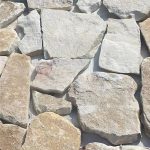Advantages and Applications of Precast Cultured Stone in Construction Industry
Introduction
In the construction industry, the use of precast materials has gained significant popularity due to their numerous advantages over traditional building methods. Precast cultured stone is a versatile and durable material that offers a wide range of design options for architects and builders. This article explores the benefits and applications of precast cultured stone in construction projects.
Advantages of Precast Cultured Stone
1. Durability: Precast cultured stone is highly durable and can withstand harsh weather conditions, making it a long-lasting building material. It is resistant to fading, cracking, and chipping, ensuring the structural integrity of the building over time.
2. Versatility: One of the key advantages of precast cultured stone is its versatility in terms of design options. It can be molded into various shapes, sizes, and textures, allowing architects and builders to create unique and visually appealing structures.
3. Cost-effective: Precast cultured stone is an affordable building material compared to natural stone or brick. Its lightweight nature reduces transportation costs and installation time, resulting in overall cost savings for construction projects.
4. Easy installation: Precast cultured stone is easy to install, which can help reduce labor costs and construction time. It can be installed quickly and efficiently, allowing builders to complete projects on schedule.
5. Low maintenance: Once installed, precast cultured stone requires minimal maintenance, saving time and money for building owners. It is easy to clean and does not require regular sealing or repainting like natural stone.
6. Sustainable: Precast cultured stone is an environmentally friendly building material that can be recycled and reused in other construction projects. Its production process generates less waste compared to traditional building materials, making it a sustainable choice for green building projects.

Applications of Precast Cultured Stone
1. Exterior Cladding: Precast cultured stone is commonly used as an exterior cladding material for buildings. Its durability and aesthetic appeal make it an ideal choice for enhancing the façade of commercial and residential structures.
2. Architectural Accents: Precast cultured stone can be used to create architectural accents such as columns, cornices, and arches. These decorative elements add visual interest and elegance to building designs, making them stand out from the rest.
3. Fireplaces and Chimneys: Precast cultured stone is a popular choice for building fireplaces and chimneys due to its heat-resistant properties. It can mimic the look of natural stone or brick, providing a rustic and cozy feel to interior spaces.
4. Retaining url : Precast cultured stone is often used to build retaining walls in landscaping projects. Its strength and durability make it suitable for supporting soil and preventing erosion, while its aesthetic appeal adds beauty to outdoor spaces.
5. Paving Stones: Precast cultured stone can be used to create decorative paving stones for walkways, patios, and driveways. Its textured surface provides slip resistance and adds character to outdoor surfaces.
6. Interior Wall Cladding: Precast cultured stone can also be used as interior wall cladding to enhance the aesthetic appeal of residential and commercial spaces. It can create a warm and inviting atmosphere, making interior walls a focal point of the design.
Conclusion
Precast cultured stone is a versatile and durable building material that offers numerous advantages for construction projects. Its durability, versatility, cost-effectiveness, and sustainability make it a popular choice among architects, builders, and building owners. From exterior cladding to interior wall cladding, precast cultured stone can be used in a variety of applications to enhance the aesthetics and functionality of buildings. As the construction industry continues to evolve, precast cultured stone is expected to play a key role in shaping the future of building design and construction.